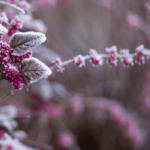
Beautiful flowers gardenia Plants For Your homes

Make your garden pop with the lion’s tail plant, a South African gem loved for its bright orange flowers. This plant thrives in warm places and attracts birds and butterflies with its nectar. It adds a royal feel to any garden.
To grow the lion’s tail plant, give it full sun to see its orange blooms flourish. It’s perfect for gardeners who want a beautiful, easy-care plant. It’s ideal for zones 8 through 11, making it a top pick for gardeners everywhere.
Adding this plant to your garden brings a touch of South Africa’s beauty. It’s a stunning choice for anyone looking to enhance their outdoor space.
The lion’s ear plant, also known as wild dagga plant or Leonotis plant, is a sight to behold. Its bright red-orange flowers look like a lion’s fiery tail. This plant is from South Africa and is not just pretty but also helps many animals, making it great for gardens.
This plant is known for its bold look and strength. It provides nectar in early winter, helping until the aloes bloom. This attracts birds, bees, and butterflies, making gardens lively. It can grow well in many places, making it perfect for gardeners who want a beautiful, easy plant.
People have always loved the Leonotis plant for more than its looks. It helps with high blood pressure and breathing problems, showing its value in traditional medicine.
This plant also helps clean the air and make oxygen, making cities prettier and healthier. It takes in pollutants and adds color and shape to gardens, making it great for eco-friendly gardening.
| Feature | Description | Ecological Impact |
|---|---|---|
| Flowering Season | Early winter nectar source | Attracts bees, butterflies, and birds |
| Resilience | Drought-resistant, frost-resistant | Low maintenance, ideal for various climates |
| Medicinal Uses | Treats respiratory issues, high blood pressure | Used in traditional medicine |
| Environmental Impact | Absorbs pollutants | Enhances air quality |
The lion’s tail plant is a star in gardens and health remedies. It brings a bit of the South African wild to homes and public spaces worldwide.
To make sure your lion’s tail plant does well, it’s key to mimic its natural home. This means choosing the right soil, sunlight, and watering. By following these tips, you can help your plant grow strong and bloom beautifully.
The lion’s Tail loves well-drained soils with a neutral to slightly alkaline pH. It does best in loamy or sandy soils. This plant needs full sun to bloom its bright orange flowers. It can grow quite tall and wide, so give it plenty of room and sunlight.
Even though it’s drought-tolerant, the lion’s tail needs the right amount of water. Start with deep watering every two weeks to help it get established. Later, you can water less often but deeper, to match its natural environment.
This plant doesn’t need much fertilizer. It prefers less fertile soil, which is good for its health.
If your area gets very cold, treat the lion’s tail as an annual or keep it in a container. Containers let you control the soil and drainage, which is important for the plant’s health in winter. They also help you manage the plant’s size and move it to the best light spots all year.
The Lion’s Tail plant, or Leonotis leonurus, comes from South Africa’s lush landscapes. It’s great for adding bright colors to your garden. It’s known for its vibrant orange flowers, making it a favorite among landscaping plants.
This plant is a standout native plant species from South Africa. It’s tough and can survive with little water, making it a drought-tolerant plant. It grows well in USDA zones 7 and above, adapting to various soils with little care. It can reach up to six feet tall and wide when fully grown.
Lion’s Tail is perfect for gardeners who want beauty with little effort. Its orange flowers bloom from spring to autumn, drawing in butterflies and birds. This makes it great for supporting local wildlife.
For those who prefer eco-friendly gardens, Lion’s Tail is ideal. It doesn’t need much food and is pest-resistant. This makes it a low-care yet rewarding landscaping plant.
The Lion’s Tail plant is a great choice for gardens. It adds beauty and supports local wildlife. It’s perfect for anyone wanting to add unique South African plants to their garden.
The Lion’s Tail plant is known for its bright rust-orange blooms and strong growth. It needs careful care to thrive. Whether you’re a pro or a beginner, knowing how to prune, water, and protect it is key. This ensures your plant stays vibrant.
Pruning your Lion’s Tail plant is a great way to keep it healthy. Do it after it blooms and before the first frost. This gets the plant ready for the next season. Cutting dead or weak stems makes the plant stronger and helps it bloom more.
For the best blooms, water your Lion’s Tail plant well and regularly. Give it a deep soak after moving it to a new spot. This helps it grow strong. Also, keep a 2-3 inch layer of mulch around the base to keep soil moist and cool. This encourages more flowers.
Watch out for diseases and pests on your Lion’s Tail plant. Keep plants 24-36 inches apart to help air circulate and prevent disease. Also, add organic mulch every 4-6 weeks. This keeps soil moist and fights off pests and diseases.
By pruning, watering, and managing diseases well, you can make your Lion’s Tail plant healthier and more beautiful. Follow these tips to make your garden more colorful and lively all season.
The lion’s tail plant is a stunning addition to any garden. It thrives with the right lion’s tail plant propagation and care. This guide will show you how to grow lion’s tail plant from seeds, use cuttings, and repot mature plants for a healthy growth.
Propagating the lion’s tail plant is fun for gardeners. You’ll learn how to start from seeds, use cuttings, and repot mature plants. These methods improve your gardening skills and make your garden look great.
Starting from seeds is a rewarding way to grow lion’s tail plants. Begin by planting seeds in well-prepared soil in spring or early summer. Seeds usually germinate within two to three weeks, growing into strong seedlings. Move them into individual pots when they are over 20 mm tall. With the right care, young plants can bloom in their first or second season. For more tips on seed propagation, check out this resource.
Using greenwood cuttings is a great way to grow more lion’s tail plants. Take cuttings from a healthy plant in early summer. Treat them with rooting hormone and plant them in a moist, well-draining mix. With proper care, these cuttings will grow into strong, healthy plants ready for your garden.
When lion’s tail plants get too big, they need a bigger pot. Choose a pot that’s a bit larger and fill it with fresh potting mix. This gives your plant new nutrients and space to grow. Be careful with the roots during repotting to avoid damage. Repot during cooler times to reduce stress and shock, helping your plant thrive.
Whether you start with seeds, cuttings, or repot mature plants, taking good care for lion’s tail plant is key. Regular watering, full sun, and organic fertilizers keep your plants healthy and colorful. These steps will make your garden a beautiful place to see these unique flowers.
The lion’s tail flower stands out with its bright orange and yellow colors. It’s known as the orange leonotis. Its flowers grow in a whorled pattern, looking like a lion’s tail. This makes gardens more beautiful and helps bees and butterflies by offering them food.
The lion’s tail flower blooms from late summer to early fall. These flowers last about 2-3 weeks, adding color and helping nature. It takes 4-6 weeks for the flowers to go from buds to full bloom, signaling a colorful time ahead.
The lion’s tail flower is not just pretty. It helps the garden and local wildlife, like bees and butterflies. These flowers are key to a healthy garden ecosystem.
| Pollinator Attracted | Flower Type | Observation Period |
|---|---|---|
| Bumblebees (Bombus terrestris) | Rosemary | Late Winter, Lyme Regis |
| Red Admiral Butterfly | Various Exotic Flowers | Winter, Roundham Head Gardens |
The lion’s tail flowers show how plants and animals work together. These gardens help local animals and make the garden stronger. They also offer lion’s tail benefits to the environment.
Leonotis leonurus, known as Lion’s Tail or Wild Dagga, is more than a pretty flower. It’s a key medicinal plant with both traditional and modern uses. Its vibrant colors make it stand out in gardens, but it’s also a vital part of herbal remedies.
Making tea from Lion’s Tail is a simple way to use its health benefits. The leaves and flowers have compounds like leonurine. These give a relaxing effect, making it a gentle choice for herbal remedies.
The tea also fights inflammation and has antioxidants. This shows the wide medicinal uses of lion’s tail.
Leonotis leonurus is strong thanks to compounds like leonurine and marrubiin. Studies show these help with fever, high blood pressure, headaches, and inflammation. This makes Lion’s Tail not just a pretty plant but a key part of natural medicine.
| Compound | Medicinal Benefits |
|---|---|
| Leonurine | Mild euphoria, relaxation, antioxidative |
| Marrubiin | Anti-inflammatory, antifungal, antioxidant |
Looking into these compounds shows how Lion’s Tail medicinal uses are backed by history and science. This highlights the value of Leonotis leonurus in both traditional and modern medicinal plant research and use.
To make sure your lion’s tail plant stands out in your garden, it’s key to follow its specific care needs. Understanding and meeting the lion’s tail plant care requirements is crucial for lots of blooms. This includes knowing what it needs for flowers to grow well.
Getting enough sunlight is vital for your lion’s tail plant. It loves full sun for at least six hours a day. Without enough light, it won’t bloom much. So, put your plant in a sunny spot for the best flowers.
Watering your lion’s tail plant right is important. It can handle some drought but does better with regular watering. Wait until the top inch of soil is dry before watering again to avoid root rot.
During the growing season, a balanced fertilizer with phosphorus helps a lot. Use it every four to six weeks to get lots of bright flowers.
After the flowers are gone, trimming your plant is key. Cut it back to encourage new growth and more blooms. This keeps your plant looking good and ready for more flowers.
The care you give your lion’s tail plant affects its health and how well it blooms. With the right amount of sunlight, water, and nutrients, and by controlling pests and diseases, your plant will be a beautiful addition to your garden.
We’ve looked closely at the Leonotis leonurus, also known as the Lion’s Tail plant. This South African shrub can grow up to 3 meters tall. It’s known for being tough and fitting well in many gardens.
Found in South Africa, Swaziland, and Mozambique, it’s important to local people. They value it for its looks and its healing powers.
The plant’s bright orange and yellow flowers attract bees, butterflies, and birds. This makes gardens more beautiful and helps nature. It’s easy to care for and can even grow indoors with the right care.
The Lion’s Tail plant is known for its strength and beautiful flowers. It’s used in traditional medicine for things like inflammation and breathing problems. It also helps with water conservation and supports many types of plants.
By adding this plant to our gardens, we bring a piece of Southern Africa into our lives. It adds beauty and helps the environment.




